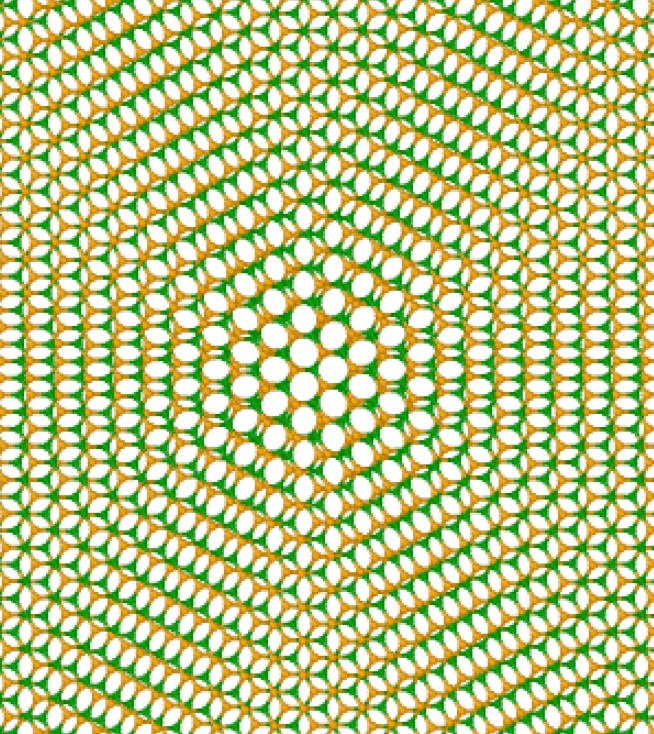New optical properties discovered in bilayers of 2D materials

A recent publication in Nature Nanotechnology has highlighted the existence of new structures in certain 2D materials.
Researchers from Imperial College London, Heriot-Watt University and the National Institute for Materials Science have observed new unique features in the optical properties in 2D materials.
Optical properties define how a material interacts with light. These properties play an important role for solar energy conversion devices, such as solar cells, but also in other applications, including light detectors.
Research into 2D materials
2D materials, like graphene, are crystalline sheets – essentially very thin flat pieces of crystal that have a thickness of only a few atoms.

When two 2D materials are stacked on top of each other, and the top layer is rotated, this transforms both materials into a ‘twisted bilayer’ material. As a result, a beautiful moiré pattern emerges between the layers.
Since 2018, intense research efforts have revealed many properties of twisted bilayer materials, including metal-insulator transitions or unconventional superconductivity with potential applications for ultrathin switchable electronic devices.
Researchers set out to investigate the optical properties of twisted bilayer materials to understand if their optical properties can be controlled by changing the rotation angle between the two 2D materials.
A new discovery
In the recent findings, researchers studied the optical properties of twisted bilayers and observed energy steps called “Coulomb staircases” in their optical properties.
This discovery is the result of a close collaboration between experimentalists and theorists and deepens our understanding of how electrons behave in 2D moiré crystals Dr Lischner
They found that these “Coulomb staircases” occurred when an additional concentration of electrons or holes were supplied to the twisted bilayer. This was because the electrons or holes are charged and each additional electron or hole increases the electric field by a certain amount which gives rise to steps in the optical spectrum.
The discovery of these “Coulomb staircases” could provide researchers with greater control over optical properties in twisted bilayer 2D materials because by changing the concentration of added electrons or holes they can precisely control the energies at which light is absorbed and emitted from the material.
Future Research
The discovery of these new “Coulomb staircases” demonstrates a new way of controlling the optical properties in twisted bilayer materials and could lead to the creation of highly tunable single-photon emitters. Highly tunable single-photon emitters are devices that release light in the smallest possible packages allowed by quantum mechanics. These devices have applications in quantum information technology.
Researchers will continue to investigate the properties of twisted bilayer materials, focusing on their optical and topological properties.
The full paper is now available to read in Nature Nanotechnology.
Article text (excluding photos or graphics) © Imperial College London.
Photos and graphics subject to third party copyright used with permission or © Imperial College London.
Reporter
Kayleigh Brewer
Department of Materials
Johannes Lischner
Department of Materials